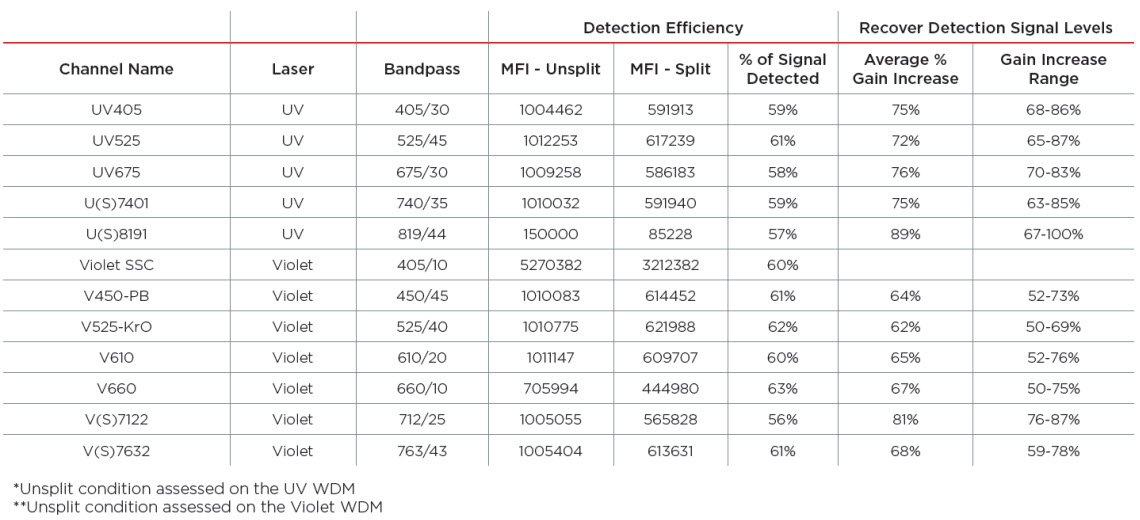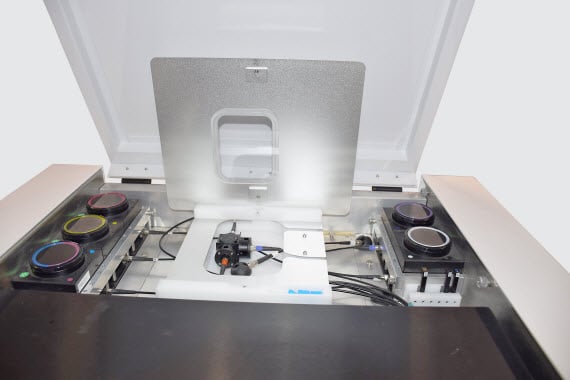Expand Violet, UV, or Near UV Channels with the CytoFLEX LX WDM Beam Splitter
The CytoFLEX LX Flow Cytometer offers an IR laser option as a standard product; it includes two detectors devoted to emission from this excitation source. Using the WDM beam splitter it will be possible to define these channels to collect emission from either the UV/Near UV or the Violet laser. This will give operators more flexibility for multicolor panels utilizing the commercially available dyes with emission in this part of the spectrum.
The median fluorescence intensity (MFI) of the unsplit signal can be achieved on the analogous split signal by adjusting the gain. To change between configurations, just reposition the fibers and select the appropriate detector configuration in CytExpert Software version 2.4 or higher. For those conducting research in the nanoscale range, the VSSC capability to resolve 80 nm PS particles is retained when the WDM Beam Splitter is engaged in the configuration. Additional bandpass filters are available including a custom bandpass filter holder which can be used for the new channels.

Channels Available with CytoFLEX LX Beam Splitter Installed. The CytoFLEX LX flow cytometers have 3 UV or Near UV channels and 5 Violet channels available. When the CytoFLEX LX WDM Beam Splitter is installed the 2 IR channels can be used for either UV/Near UV or Violet emission. This brings the total UV or Near UV channels to 5 or the total Violet channels to 7.
Whenever light is transmitted through an optical filter or reflected by a mirror, some light is lost. The design of the optical components was tested to assess this impact on detection efficiency. The testing was performed to answer two questions: 1) with Gain held constant, how much signal intensity is lost? and 2) how much does the Gain need to be increased to attain equivalent signal intensity?
CytoFLEX LX WDM Beam Splitter Efficiency Testing

CytoFLEX LX WDM Beam Splitter Performance Testing. Three CytoFLEX LX instruments with the WDM Beam Splitter installed were tested for Detection Efficiency and for Signal Recovery through gain adjustments. Presented are the averages across all three instruments for each channel assessed.


